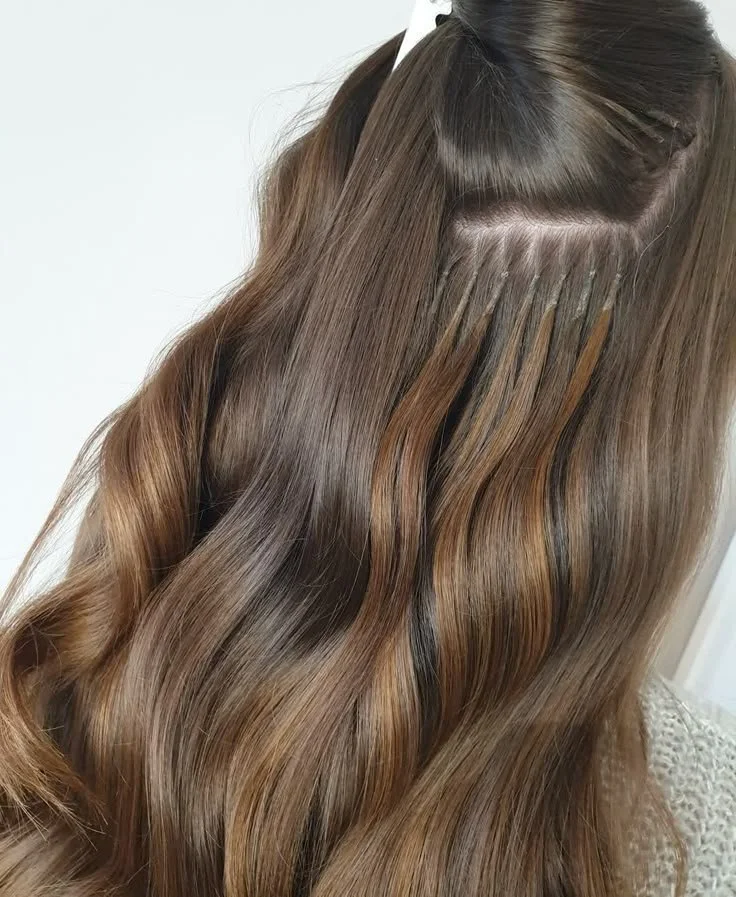Which Extension Method Is Best for Fine Hair? Expert Picks
Finding the right solution to add length or volume can feel overwhelming if you have delicate strands. Many people with thin or fragile locks wonder: Which Extension Method Is Best for Fine Hair? Since fine hair requires extra care, not every method is suitable. Choosing wisely ensures your extensions look natural, last longer, and—most importantly—don’t cause unnecessary damage.
In this article, we’ll break down the top methods experts recommend, explain the pros and cons, and give you practical tips for maintaining extensions on fine hair.
Which Extension Method Is Best for Fine Hair? Expert Picks
Not all extension methods are created equal. While some techniques work beautifully for thick or coarse hair, they can weigh down or stress delicate strands. The most recommended methods for fine hair include:
Tape-In Extensions
Hand-Tied Wefts
I-Tip (Microbeads or Micro Links)
Clip-In Extensions (occasional use)
Each comes with its own advantages and considerations. Let’s explore them one by one.
Tape-In Extensions: The Lightweight Favorite
Tape-ins are widely recognized as the safest and most effective option for fine hair. These extensions use ultra-thin adhesive strips to attach wefts directly to your natural strands.
Why They Work for Fine Hair:
The adhesive tape is flat and lightweight, making it blend seamlessly without pulling.
They distribute weight evenly across the root, reducing strain.
They lie flush against the scalp, avoiding bulkiness that can reveal extensions.
Pros:
Quick application (usually under an hour).
Reusable for multiple installs if maintained properly.
Natural look that doesn’t overwhelm delicate strands.
Cons:
Require professional installation and removal.
Maintenance is needed every 6–8 weeks.
Oil-based products can weaken the adhesive.
Expert Insight: Many stylists consider tape-ins the gold standard for fine hair clients who want everyday wear without damage.
Hand-Tied Extensions: Ultra-Natural With the Right Technique
Hand-tied wefts are another excellent choice for fine hair when installed properly. Small beads or thread are used to secure the extensions to a row of your natural hair.
Why They Work for Fine Hair:
The wefts are extremely thin and lightweight.
They create a very natural appearance since the rows are customized to your scalp.
When done by a skilled stylist, there is minimal tension at the roots.
Pros:
Long-lasting results (6–10 weeks before adjustment).
No glue or adhesive used.
Comfortable and nearly undetectable once installed.
Cons:
Application takes longer than tape-ins.
If installed too tightly, they can cause breakage.
Professional expertise is critical—this is not a DIY option.
Expert Insight: Hand-tied extensions are ideal for fine-haired clients who want a fuller look without adhesives. The key is choosing an experienced stylist who understands tension placement.
I-Tip Extensions: Flexible but Risky for Fragile Hair
I-tip or microbead extensions attach small bundles of hair to your natural strands using tiny metal beads or cylinders. They are heat-free and adhesive-free, making them appealing to those avoiding chemicals.
Why They Sometimes Work for Fine Hair:
No glue or tape required.
Individual strands allow for flexible styling.
Can last up to 3 months with proper care.
Pros:
Durable for long-term wear.
Easy to maintain between salon visits.
No chemical adhesives touching the scalp.
Cons:
Beads may slip more easily on fine hair.
The pressure of the beads can cause damage if the hair is fragile.
May feel bulky if too many strands are added.
Expert Insight: While I-tips can be suitable for some fine-haired clients, stylists often caution against them if the hair is especially fragile. A consultation is necessary to assess suitability.
Clip-In Extensions: The Occasional Volume Boost
Clip-ins are temporary extensions you can apply at home. They come in wefts that you clip into your natural hair for instant length and volume.
Why They Work for Fine Hair (in moderation):
Perfect for special occasions.
No glue, heat, or adhesives.
Easy to apply and remove without professional help.
Pros:
Affordable compared to salon methods.
Reusable for months with proper care.
Instant transformation without commitment.
Cons:
Clips can pull and weaken fine strands with frequent use.
May not blend seamlessly if hair is very thin.
Not designed for everyday wear.
Expert Insight: Clip-ins are a fun, safe option if you only want extensions occasionally. For daily use, tape-ins or hand-tied methods are gentler and more natural.
What to Avoid: Heavy or Bonded Methods
If you have fine hair, steer clear of methods that involve heavy bonding, keratin glue, or large wefts sewn tightly into braids. These techniques can cause strain, breakage, and thinning. Specifically, fusion extensions and machine-tied wefts tend to be too heavy for delicate strands.
Maintenance Tips for Fine Hair With Extensions
Whichever method you choose, maintenance is crucial to protect your natural hair:
Gentle Brushing: Use a soft bristle or loop brush to avoid snagging.
Sulfate-Free Shampoo: Keeps extensions and natural hair healthy.
Avoid Oily Roots: Too much oil near the bonds or tape can weaken the hold.
Regular Salon Visits: Touch-ups every 6–8 weeks prevent matting or damage.
Protect at Night: Braid or tie extensions loosely before bed to prevent tangling.
The Consultation Is Everything
The most important step in determining which extension method is best for fine hair is booking a consultation with an experienced stylist. They’ll analyze your hair’s density, texture, and scalp condition before recommending the safest method.
Remember: the right choice is not about following a trend but about preserving the health of your natural hair while enhancing your look.
Conclusion
So, Which Extension Method Is Best for Fine Hair? According to most stylists, tape-in extensions remain the top recommendation, followed closely by hand-tied wefts for a natural, long-lasting result. I-tips can work for certain cases, while clip-ins are best reserved for occasional wear.
Ultimately, the safest and most natural-looking option depends on your unique hair type and the skill of your stylist. With proper care and the right method, fine hair can enjoy the volume, length, and confidence boost that extensions provide—without the damage.




